 |
SRGC Bulb Log Diary |
| Home Recommend This Site To A Friend |
|
BULB LOG 30 24th July 2003
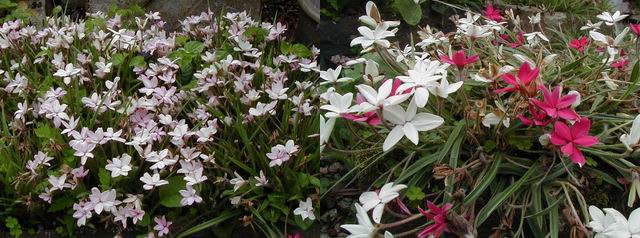
Rhodohypoxis x2 In the garden the troughs of Rhodohypoxis are still providing colour but keep a watch out for the seed ripening. Rhodohypoxis is unlike any other bulb that we grow in the way that their seed capsule opens. As the flower fades it drops away and it takes with it the top of the seed capsule exposing the shiny black seeds which are soon scattered if you are not quick. 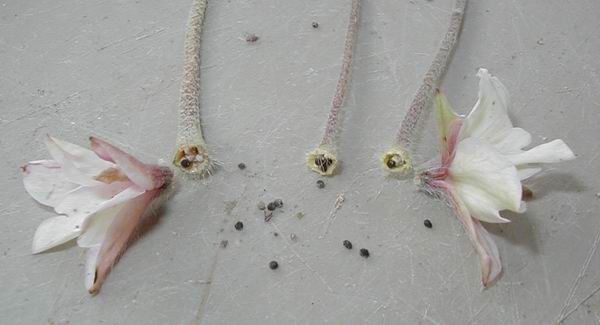
Rhodohypoxis seed heads. It is the same with Dicentra peregrina which is not a bulb! but the seed pod forms and usually splits before the flower fades and drops away so you have to be quick there as well. 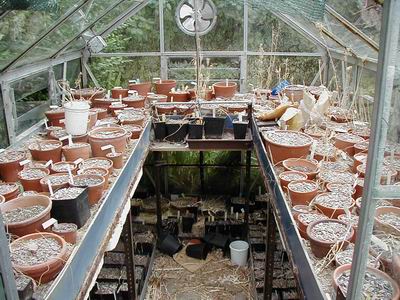
Frit house 22.07 The Frit house looks at its worst just now with paper bags for seed lying on the pots, some of which have been repotted, others are still waiting and piles of dried stems litter the floor. I will tidy it up when the repotting is complete but there is far too much to do at the moment. 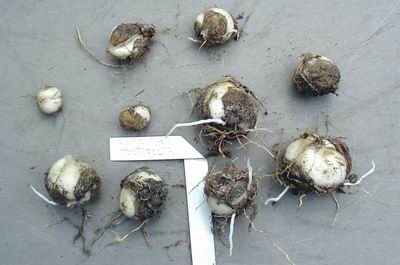
Fritillaria tortifolia As you will see from this Fritillaria tortifolia which is already showing new roots it is not a moment too soon to be repotting some of the frits. I am finding that many of the Chinese frits want to make roots very early, often before the old foliage has died away, being kept dry does not seem to stop them. I think this is why many of them did not perform well the first year we got them from China. It was as I suspected, they had already made roots and by the time we received them in December the roots had died so the bulbs had to enter survival mode. Many did not produce any growth above ground and under ground the old bulb transferred its resources to a new but smaller bulb. Most of them grew well the second year but some took another year to settle back to a normal pattern of growth. 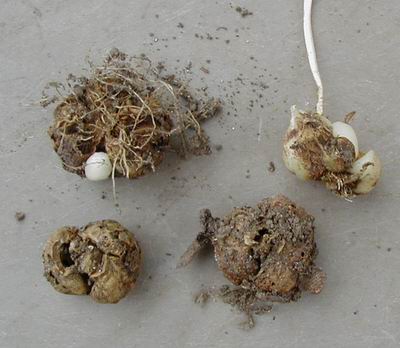
Fritillaria bad sign As I have mentioned it has not been the best year for frits. Here are some bulbs that just did not produce any growth and we are left with a dried up bulb shaped husk, these are what I call 'ghosts'. Similar to the Chinese ones, these bulbs for some reason have not succeeded in making a root system so the bulb has died. Sometimes there are small healthy bulbs attached sometimes not. It is always worthwhile crumbling the ghost as you may find a small bulb in the centre. 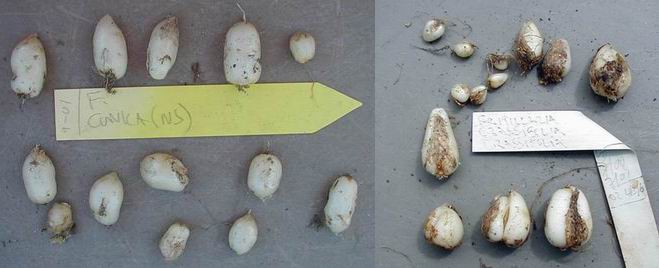
Fritillaria conica seedlings & F. crassifolia crassifolia I am fascinated by bulbs (the actual bulb) - look at the elongated shape of these Fritillaria conica seedlings (left), they are still all single scaled the second scale is hardly visible and should develop next year, then the bulb will be of a more rounded shape. Just compare that to the F. crassifolia crassifolia bulbs; the bottom ones are twin scaled and flowering sized but retain an elongated shape. I have found this to be a common feature among several forms of F. crassifolia crassifolia we grow. 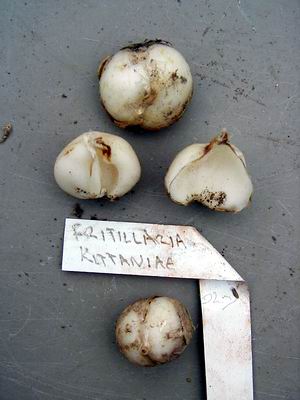
Fritillaria kittaniae Fritillaria kittaniae has a typical twin scaled fritillara bulb, you can see the two scales in the centre bulb which I have split apart. I have not done this just to show you the two scales, this is a technique that is often used to help increase stock of frits that do not increase themselves naturally. In the half on the left you will see towards the centre the slender shoot that contains next years growth, this should flower as normal. The other half has latent buds which having had the dominant shoot removed will now come into growth, just like pruning out the terminal bud of a shrub will allow the secondary buds to grow. By this time next year I will expect two flowering sized bulbs from this split one. 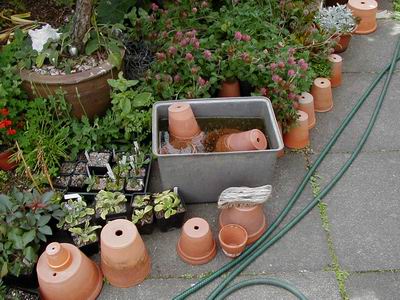
Pots soaking Of course repotting means there is a continuous supply of pots to be soaked and scrubbed, this is Maggi's job. ('hrrrumph!' Maggi)! 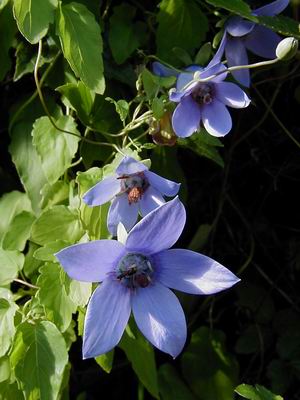
Codonopsis grey-wilsonii We used to call this Codonopsis forrestii but now I believe we should call it Codonopsis grey-wilsonii ! It is a beautiful climbing plant that grows from tubers. ^ back to the top ^ |